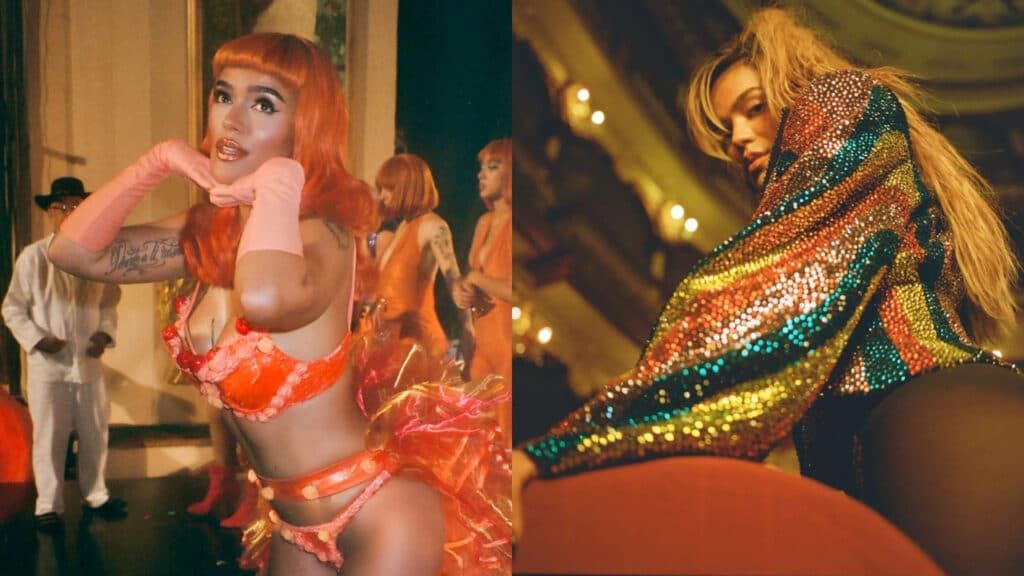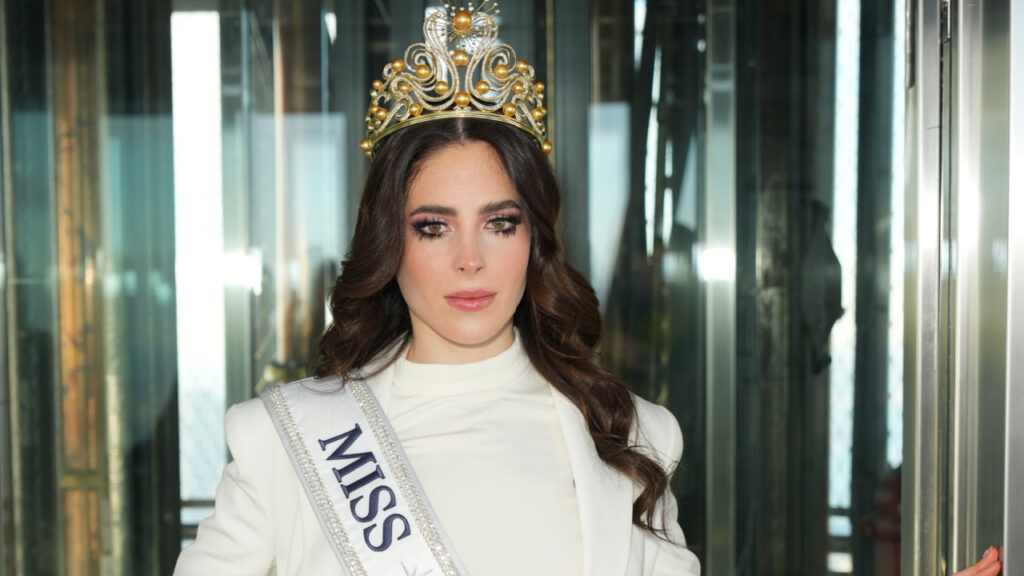Karol G Is in Her Historian Era with Tropicoqueta—These Are the References You Missed
Karol G has taken on many personas. She was La Bebecita, a post-urban icon of mischievous sweetness. Then, she was La Bichota, the queen of perreo with a businesswoman’s face. Now, she is La Tropicoqueta—and this time, it’s not just an aesthetic shift. But an archaeological and, above all, nostalgic operation, sharing its name with her new album.
Tropicoqueta is her fifth studio album, where Karol G dives into the emotional archive of Latin American music. Not to preserve it in a museum, but to make it sweat on the dance floor. What she unearths is a past that moves with the rhythm of the present. A lineage of divas, genres, soap operas, and melodies that never really disappeared. They were simply waiting to be sampled.
Tropicoqueta is not, as more than one lazy review has stated, “a tribute to her roots.” It’s a sonic device filled with emotional citations—an album built from references that interact with each other like characters in an ensemble novel. If each song is a country, as her fans say, then each rhythm is a scar, and each collaboration an inheritance.
Tropicoqueta as a Cabaret Dreamscape
The visual aesthetic of the album says it all: feathers, sequins, impossible platform shoes, and Caribbean diva poses. Karol G isn’t paying tribute to Carmen Miranda just for show. She’s summoning her. The same goes for Pérez Prado’s mambo—”Mambo No. 5″ appears in a teaser for the album like the trailer for a movie that never existed but everyone remembers watching.
Tropicoqueta is set at the intersection of the Cuban cabaret archive, the telenovela, and Brazilian carnival funk. Karol chooses to dress as a vedette, not as ornament, but as a gesture. The diva as archive. Costume as identity and power. It’s no surprise that in the music video for “LATINA FOREVA,” the Colombian singer wears a green sequin bikini with fringes that once belonged to Mexican vedette Rosy Mendoza. Exoticism may sell, but the truth of the cabaret divas reminds us that sensuality in Latin America wasn’t always tied to prostitution or hypersexualization—it was also the realm of artists like Omara Portuondo, Libertad Lamarque, or Celia Cruz, born from the Tropicana cabaret in Havana.
Reggaetón as Archive: From Ivy Queen to Don Omar
The first and most essential reference running through Tropicoqueta like a spine is the genre that made Karol G famous: reggaetón. But not the kind you hear in VIP clubs or bland playlists. This is reggaetón that was danced to in garages, at quinceañera parties, and on radio stations before Spotify even existed.
The track “LATINA FOREVA” is, in this sense, a museum song. Karol G pays tribute to early 2000s Nuyorican reggaetón with a sample from Don Omar’s “Dile,” the beat from “Oye Mi Canto” by N.O.R.E., Daddy Yankee, and Nina Sky, and a direct homage to Ivy Queen, the genre’s pioneer.
The result is a revival where being Latina is not a demographic label—it’s a sonic stance. A way of speaking, moving, and surviving through the erotic body (“Teta y nalga, te-teta y nalga”).
A Journey Through Latin Nostalgia
If Tropicoqueta is a nostalgic, romantic, and sensual album that explores the ’80s and ’90s, then in “Ese Hombre Es Malo,” Karol G turns heartbreak into stylized pain. Backed by a 57-piece orchestra recorded in Guadalajara and echoes of Juan Gabriel and Rocío Dúrcal, the song feels like heartbreak turned religion—and mariachi, its mass. Ranchera here isn’t just tradition: it’s an emotional strategy.
Karol G also ventures into Argentine cumbia in “Cuando Me Muera Te Olvido,” blending it with Anglo pop and a direct wink to “Careless Whisper” by George Michael. Heartbreak, now with global flair and a saxophone.
In “Un Gatito Me Llamó,” Dominican dembow becomes a digital experiment: classic beats mixed with notification sounds. Here, even text messages get danced to—and if they’re spicy, even better.
With “Bandida Entrenada,” she dives into funk carioca, borrowing from the legacy of Brazilian singer Anitta, but with the deliberate attitude of someone who wants to seduce—and shake—you.
The journey closes with “Viajando Por El Mundo,” featuring Manu Chao, where the shadow of his Clandestino album looms large, and the chorus celebrates the joy of moving, getting lost, and starting over.
Merengue and Bachata in Tropicoqueta’s Emotional Archive
Dominican merengue—often dismissed for its party connotations—gains new depth in the viral and multi-award-winning “Si Antes Te Hubiera Conocido.” Here, its quick tempo collides with melancholic lyrics about impossible love, crafting an emotional counter-dance.
Similarly, “Ivonny Bonita” brings bachata with a montuno flavor and production by Pharrell Williams, who drops a brass solo that turns the track into a hidden bolero. Sensuality is no longer frivolous—it’s a survival strategy.
Finally, “Papasito” delivers a slow merengue best danced close. Sung in English with Spanish backing vocals, it recalls the 1980s Venezuelan merengue groups like Los Melódicos, where singers like Diveana, Liz, or Floriana added sensual flair to their performances.
Tropicoqueta and the Pop Telenovela Imagination
Karol G doesn’t hide her obsessions. She’s admitted to growing up watching telenovelas and crying over characters played by Anahí and Ninel Conde, who now appear in the album’s visual teaser. This isn’t kitsch—it’s political. The telenovela, long dismissed as a lesser genre, becomes the perfect narrative device for Tropicoqueta. What is Latin pop, if not a sequence of episodes about desire, betrayal, and redemption?
The presence of singer Thalía in the album’s intro confirms it. When she says, “You went from La Bebecita to La Bichota and now to La Tropicoqueta,” she’s not joking. She’s formalizing a transformation—as if voicing over the third artistic rebirth of Karol G in the opening monologue of a soap opera.




